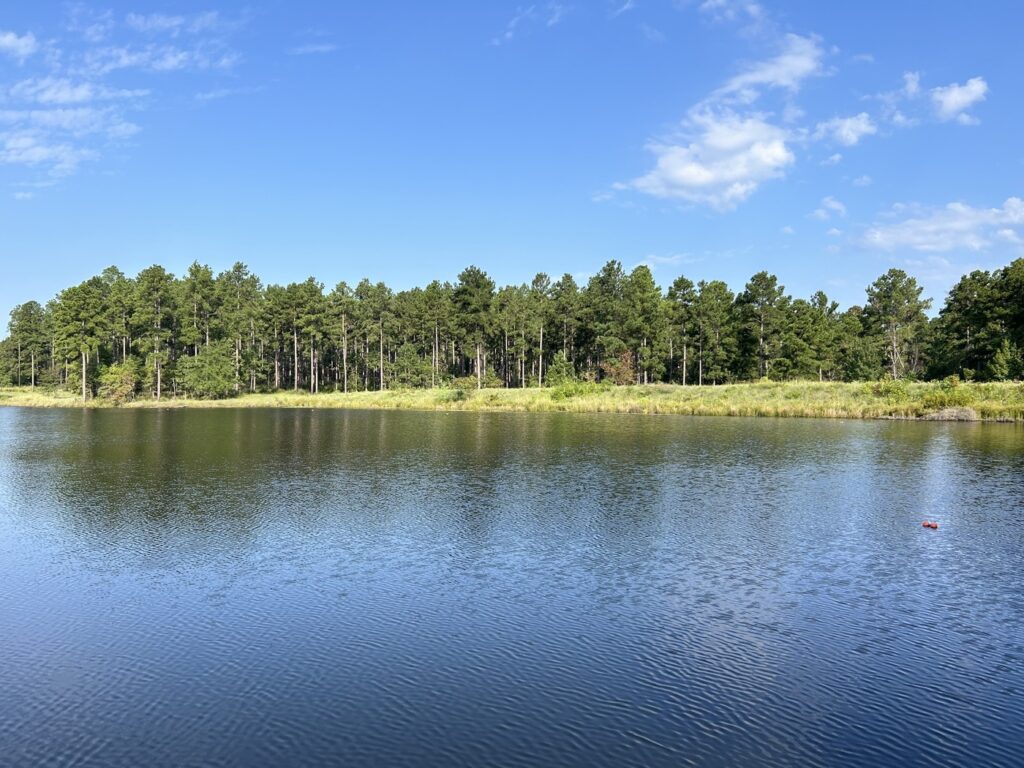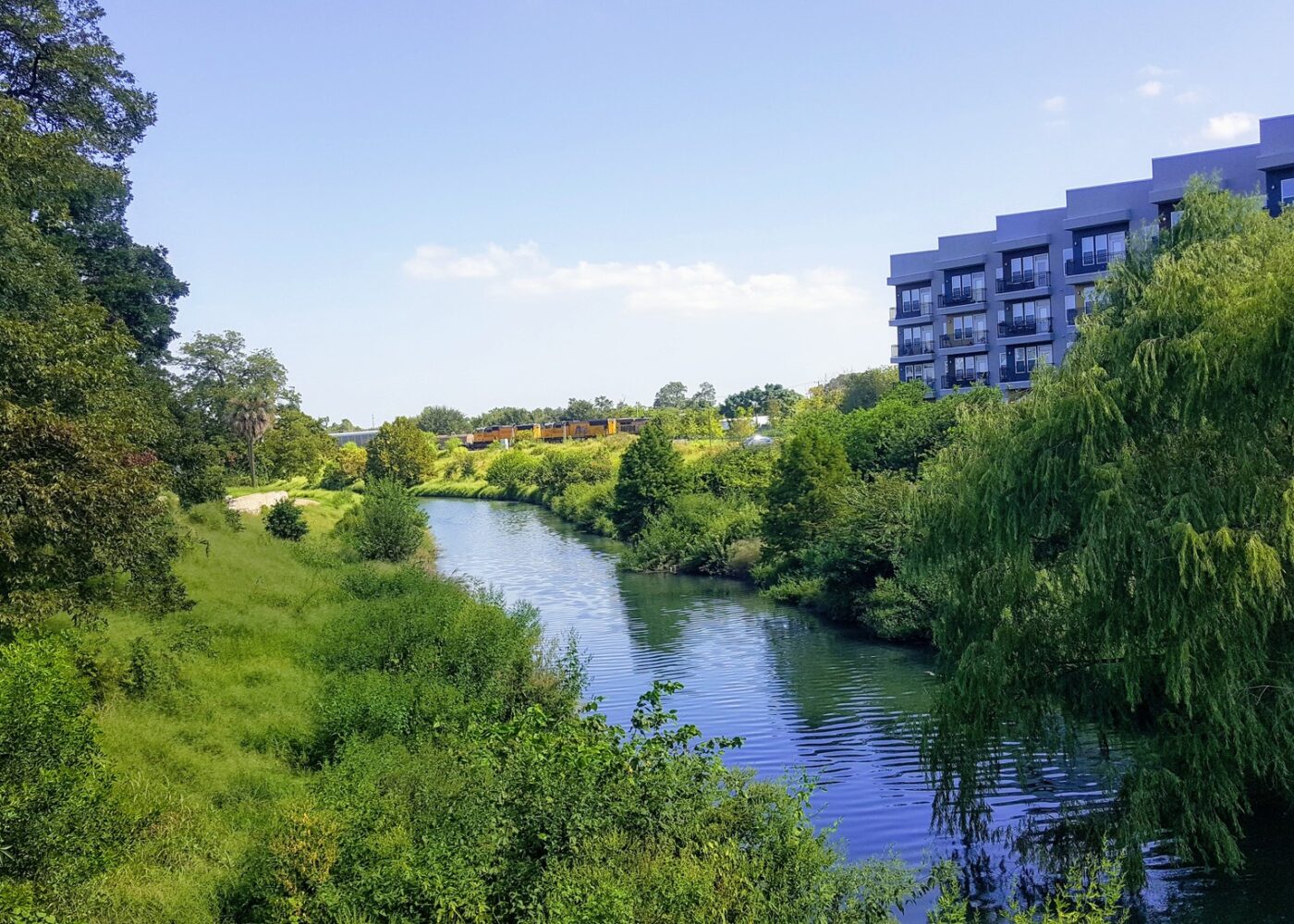Forests provide the cleanest water of any land use. And as Texas’ population increases and forests and woodlands decrease, our water supply is at risk.
Texas forests
- Absorb rainfall
- Refill groundwater aquifers
- Slow and filter stormwater runoff
- Mitigate erosion
- Reduce flooding
- Maintain watershed stability and resilience
This process is known as the forest-water relationship, or watershed ecosystem services, and is valued at $13.2 billion annually.
Partnerships and best management practices are used to enhance the forest-water relationship and engage others to protect our water supplies. The Texas Statewide Assessment of Forest Ecosystem Services Report outlines these enhancements.
Watersheds
A watershed is an area of land where water, such as rain, snowmelt, and the runoff from your neighbor’s broken sprinklers, drains into a common water body. This can be a creek, lake, or river. Many of these waterbodies eventually converge and flow into our bays, the Gulf of Mexico, and eventually the Atlantic Ocean.
Forested watersheds specifically are a source of clean drinking water for over 180 million Americans. Forests slow and filter rainfall and runoff, which helps maintain and stabilize a watershed by giving the rain time to infiltrate the soil, reducing erosion.
Our Forests and Water Story Map tours you through the role of forests in conserving water resources and sustaining them in the future.
The geospatial watershed assessment can be used to target conservation assistance to enhance drinking water.
Urban forests
Best Management Practices
Stewarding Texas Forests through Best Management Practices (BMPs) is vital to protecting water resources. BMPs are conservation practices designed to protect soil and water resources. Treating and protecting water at its origin, and not just at its destination, is an efficient, cost-effective, and sustainable way to provide water for Texas.
We work with natural resource professionals, landowners, and contractors across the state to implement BMPs and practice land stewardship.

